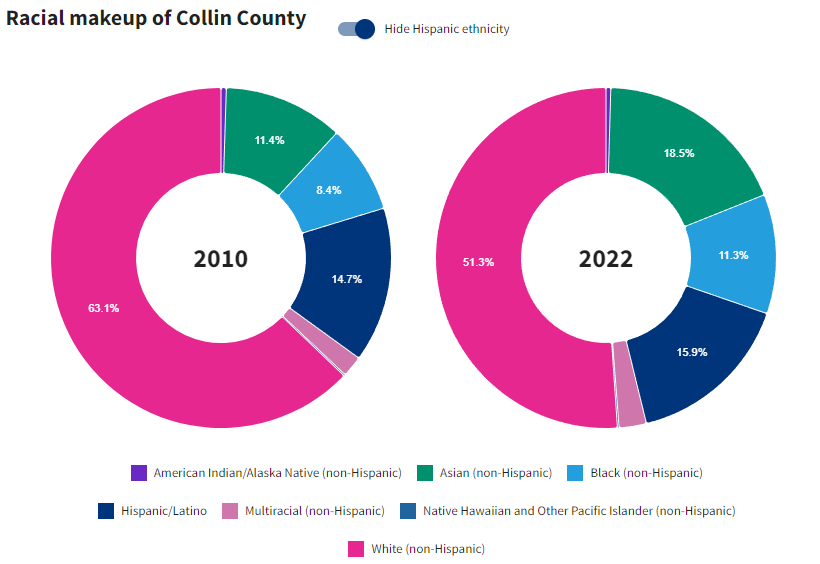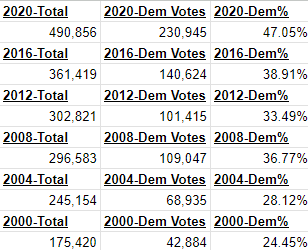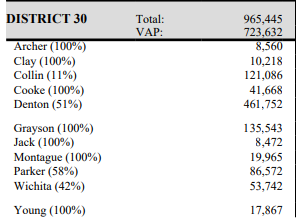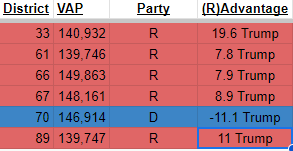How Important Is Collin County In The 2024 Election?
Why Collin County could flip in 2024.
This year, there are a lot of people holding their breath and busting their butts to bring Collin County out of the dark ages and into a bluer and brighter world. If demographics are destiny and data has a pattern, we could likely see a blue Collin County in November.
Collin County hasn’t been blue since before the Southern Strategy, but they’ve taken big strides toward big blue for several election cycles. This year could very well be the year they flip.
Let’s talk about why so many people are riding on a flip in Collin County this year, and let’s start with the Democratic voter turnout over the last few decades.
Since 2000, Collin County has moved 22.6% to the left. Except for 2012, Collin swings three to eight points every presidential cycle. (Don’t ask me about 2012; it was the only presidential cycle of the last six in which Republicans made gains. I haven’t done a deep-dive as to why, but my gut tells me it was the racist Obama backlash.)
Here are the swings:
Like much of Texas, Collin County is only getting bluer with time. Collin County only needs to secure three higher points this year than they did in 2020 to flip. Considering every presidential election (except for 2012), they’ve gained more than three points (over eight in 2020), it’s easy to see their path to victory.
Moreover, in 2020, it had one of the highest voter turnout rates in Texas, at 75.67%.
2024 is becoming one of the most critical elections of our lifetimes. If the voters in Collin County see the dangers of a second Trump term and Project 2025, then a blue Collin County is almost inevitable.
How Collin County has grown.
Collin County is growing at an unprecedented rate, and its population is expected to double by 2060. Four of its cities (Celina, Princeton, Prosper, and Forney) are ranked among America’s top ten fastest-growing cities.
In addition to its fast-growing pace, the demographics are rapidly changing.

This matters because we know that the majority of non-white groups vote for Democrats.

Based on what we’ve seen in Texas over the last few decades, we understand that when a county becomes less white, it also becomes more blue.
This is often why many Texas politicos say, “Demographics are destiny.”
Collin County is growing rapidly, becoming more diverse, and is ready to flip this year.
What should we expect to see in Collin County in November?
There are currently 715,657 registered voters (although that number could increase before November). If Collin County sees another 75% voter turnout this year, that’s as many as 541,546 voters.
We could see at least a 5% gain from the 2020 Democratic turnout, equating to over 280,000 Democratic votes in Collin County alone.
On the ballot in Collin County are three Congresspeople, two State Senators, and six State Representatives.
Here is who is on the ballot:
TX03:
Keith Self* (R)
TX04:
Pat Fallon* (R)
Simon Cardell (D)
TX32:
Julie Johnson (D)
Darrell Day (R)
SD08
Angela Paxton* (R)
Rachel Mello (D)
SD30
Brent Hagenbuch (R)
Dale Frey (D)
HD33:
Katrina Pierson (R)
HD61:
Keresa Richardson (R)
Tony Adams (D)
HD66:
Matt Shaheen* (R)
David Carstens (D)
HD67:
Jeff Leach* (R)
HD70:
Mihaela Plesa* (D)
Joe Collins (R)
HD89:
Candy Noble* (R)
Darrel Evans (D)
The Congressional Races.
First, TX32 is Colin Allred’s current seat. It’s a reliably blue seat, meaning Representative Julie Johnson will go to Congress. 🎉
TX03 and TX04 are going to be a little trickier due to gerrymandering. However, due to the unpopularity of these Republican incumbents and the rapid growth in Collin County, we may see significant movement in these races, even if they don’t flip.
Based on the precinct-level data, TX03 (Keith Self) had a +14.4 advantage after redistricting. TX04 (Pat Fallon) had a +25.9 advantage.
In every race, from dog catcher to president, there are a lot of unknowns in this election. Will the never-Trumpers stay home? Will they switch votes? Will they also switch votes down the ballot? What if Trump gets sentenced to prison in September? What if the DNC switches out Biden? What if the Supreme Court does something else extreme? These aren’t our parents’ politics.
The Senate Races.
We really, seriously have a chance of getting rid of Angela “Bonnie Parker” Paxton this election. As part of Ken Paxton’s “Don’t Hold Me Accountable Revenge Tour,” he attempted to primary several Collin County House Republicans and failed. That means that, of all places, Ken Paxton is unpopular with Collin County Republicans. That’s important because Collin County is where the Paxtons call home.
If Ken Paxton is that unpopular locally, it’s not a huge jump to assume that his partner in crime, Angela Paxton, is also unpopular locally.
Based on the precinct-level data, Angela Paxton had a +12 advantage after redistricting. The Democratic candidate running against her, Rachel Mello, definitely has a shot if she raises enough capital and runs a phenomenal campaign.
SD30 is a bit trickier. It’s the seat currently held by retiring Republican Drew Springer and covers many rural counties and Collin County. Republicans have a +23.2 advantage in this district, which will make it difficult for Democrats to pull off a flip.
Most SD30 is in Denton County, one of the counties we will discuss in a future installment.
While turnout for SD30 in Collin County is paramount, Denton County Democrats have the opportunity to make the most impact in this race.
The House Races.
I’m feeling most hopeful about the State House races for Collin County.
Unfortunately, HD33 does not have a Democratic opponent, which means the far-right extremist Katrina Pearsons, who moved here just to run for office, will go to the Texas House. 🤮 But don’t worry about it too much. Texas Democrats are intelligent and scrappy. They’ll undoubtedly give us some clips of her embarrassing herself next year. So, we can look forward to that because there’s always a bright side.
Mihaela Plesa currently holds HD70. While there are some concerns about this district in November because Plesa only won by 1.5% in 2022, I think she will be safe this year. Here is why:
In 2022, Democrats stayed home. We all know it. Let’s not rehash it. In fact, Plesa won, even though her district saw a 39.8% turnout in 2022. This will NOT be repeated in 2024.
This district is more urban and diverse than the rest of Collin County.
It wouldn’t surprise me to see Plesa win by 10 points this cycle.
Then there are the other four House seats.
All four of these Republicans are pro-voucher, and that’s going to hurt them in November. The Democrats running against them need to use voucher messaging in their campaigns.
Keresa Richardson, who ousted an incumbent Republican in HD61, is a far-right extremist who signed a racist pledge to ban Democratic Chairs in the House, and she also signed the abolish abortion pledge. The abolish abortion pledge includes:
Banning IVF
Banning Contraceptives
Death penalty for women who have abortion care, even in cases of rape or incest, even if the “woman” is a minor.
These are not popular positions with moderates. If the Democratic candidate, Tony Adams, can spread the word about her awful positions, he has a solid path forward.
While all four of these districts are just barely over 50% Anglo, this is based on the 2020 census. Considering how fast this area is growing and diversifying, any of these districts could be much less white than they were in 2020. Again, this matters because of how these voting blocks typically cast their votes.
Keep a close eye on Collin County and these races on election night. We may see some upsets.
The stakes in Collin County could not be higher in the 2024 election.
With its rapidly growing and diversifying population, Collin County stands at the cusp of a significant political shift. The data shows a consistent trend towards a more Democratic electorate, driven by changing demographics and a high voter turnout rate. This year could be the turning point that flips Collin County blue, sending a strong message that progressive policies and inclusive governance are the future of Texas.
As we approach election day, voters must recognize the power of their vote and the impact it can have on shaping the future. A high turnout, an informed electorate, and strategic campaigning could make all the difference. The future of Collin County hinges on the decisions made in this pivotal election.
Vote early, vote often, just vote.
Leading up to the November election, we’re discussing the data in some of the most important counties in the upcoming elections. If you missed the previous four installments:
July 20: First day for write-in candidates to declare their candidacy.
August 19: Last day for write-in candidates to declare their candidacy.
October 7: Last day to register to vote.
October 21: First day to early vote.
October 25: Last day to apply for a mail-in ballot.
November 1: Last day to early vote.
November 5: Election day!
LoneStarLeft’s Newsletter is a reader-supported publication. To receive new posts and support my work, consider becoming a free or paid subscriber.
Follow me on Facebook, Twitter, TikTok, Threads, YouTube, and Instagram.








I was at a pool party somewhere north of I-635 ...was it Farmer's Branch, Carrolton,, Mars? Hard to tell.
A contractor , nominally agnostic, is going Biden after a little gentle persuasion
Miracles happen